Welcome to the guidebook on the topic “How Many Keywords Should I Use for SEO”. In this guide, we have discussed all the aspects related to the keywords and their use in content for SEO, especially 6 proven hacks about how many keywords should I use for SEO.
In this guide, you can expect to learn about:
- Basic introduction of keywords in SEO
- Use of semantic keywords in content
- Finding user intent
- How many keywords should I use for SEO
- And much more
Table of Contents
Chapter 1
Keywords Role In SEO
Importance Of Keywords in SEO
Yes, keywords are still important for SEO 2024. To understand: How Many Keywords Should I Use for SEO, we have to understand the importance of the role of keywords in SEO. One of the main and important key factors in SEO is “Relevancy” which means making your content relevant to what the user looking for.
To make your content relevant for the users and search engines, it needs to find the terms or phrases that a user uses in search engines to find his relevant content.
For example, a user is looking for organic food items and he goes to a search engine search for the keyword “Organic Food Store”. As the user inserts this keyword into any search engine, it starts crawling websites to find the relevant page having content with the same or related keywords integrated into it. After crawling the pages, algorithms list these pages as search results sorted with the most relevant pages on top.
So if the person has an organic store and has made his content relevant to the keyword “Organic Food Store”, by incorporating this keyword, its related keywords, synonyms, and semantic keywords (more on later in this article), This will rank on top in the search results based on relevancy while neglecting the other two key factors authority and usefulness.
Similarly, we published a post with a focus keyword on the best SEO companies for small business, Google will try to understand the context of the page by finding the relevant keywords like SEO companies for real estate, local SEO companies, a list of SEO companies, reviews of SEO companies and images related to this topic like logo of SEO companies.
You can find the screenshot from the Google blog about “How Google Analysis Relevant Content” below.

Chapter 2
Semantic SEO and User Intent
We understand the basics of keywords and their role in SEO. Now it’s time to learn about the working methodology behind Google to check the relevancy of a page’s content for a specific keyword. So, If you want to know about the semantic approach and user intent used by Google to rank a page then this chapter is for you.
Making Content Semantically Relevant
The algorithms of search engines keep on updating. A few years back Google just used to see the main keyword to rank a page in search results but later on, a lot of things got updated. Now we found that Google looks for non-keyword-related terms that we named as semantic words to understand the context of content.
For example: if a person has published a blog on the topic “Tea Recipe: How to make a cup of tea”. Here Google found the keyword in the title about “tea recipe” but still it will do a semantic analysis by looking for the words of names of ingredients used in making a cup of tea like milk, tea, boiling, stirring, tea cups, etc. (semantic keywords).
This simply means optimizing content just for the main keywords is not enough but we also have to make our content populated with these semantic keywords to help search engines understand the context. This is called Semantic SEO.
Aligning Keywords with User Intent
User intent simply means the reason behind a search query—what the user is looking for or hoping to accomplish. There are generally three types of search intent:
Informational: The user is looking for information or answers to questions.
Navigational: The user is trying to find a specific website or page.
Transactional: The user intends to complete a transaction, like making a purchase.
Aligning your keywords with the user intent behind search queries is crucial. This alignment ensures that your content not only attracts traffic but attracts the right kind of traffic—visitors who are genuinely interested in what you have to offer.
Here’s how you can align your keywords with user intent:
- Understand your audience: Research to understand the needs, questions, and problems of your target audience.
- Analyze search queries: Look at the types of queries that lead people to your site and the content they engage with. Tools like Google’s Keyword Planner and Google Trends can offer insights into the intent behind searches.
- Create targeted content: Develop content that addresses the specific needs and questions of your audience based on their intent. Use keywords naturally within this content to signal to search engines what your content is about and whom it can help.
Chapter 3
How Many Keywords Should I Use for SEO (#6 Proven Hacks)?
Now let’s move on to the third chapter to discuss “How many keywords should I use for SEO”. Stay with this guide if you want to know how to and how many keywords should I use for SEO on a single page to rank that page in search engines like Google.
#1 Main Keyword
This is your target or focus keyword that best represents the page’s content. Aim for one main keyword per page to keep your focus sharp and relevant.
#2 Related Keywords
These are variations or synonyms of the main keyword. Including a handful of related keywords, around 2-5 keywords, can help search engines understand the context of your content better.
#3 Google Suggested Keywords
When you type a query into Google, it suggests related searches. Incorporating a few of these, perhaps 4-8 keywords, can increase your page’s visibility for similar searches.
You can find the Google suggested keywords in two ways. Follow the method in the screenshots.
Method 1:
Type your main keyword in Google just and it will show you his suggested related keywords
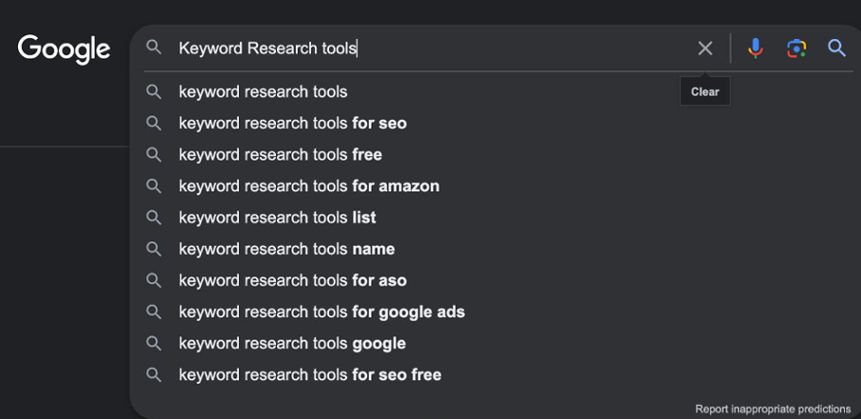
Method 2:
Search for your main keyword and scroll down the search results till the end of the 1st page. You will the Google suggested keywords section.
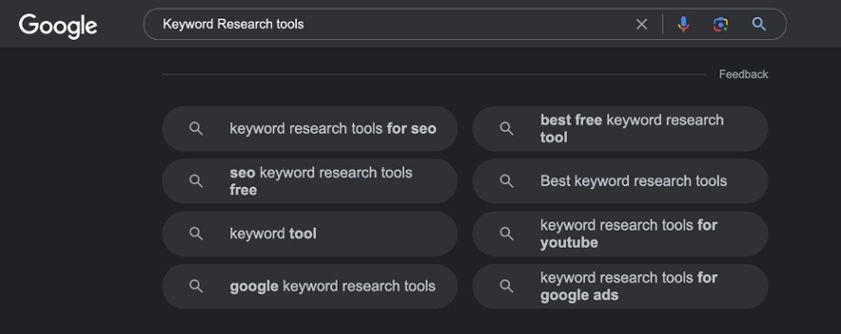
#4 People Also Ask Questions:
Including answers to 1-4, “People Also Ask” questions appearing in search results for that specific keyword you want to rank, on your page can enhance its value to both users and search engines by covering more related topics.
You have to search for your main keywords in Google and scroll to the “People Also Ask” section to find the faqs.
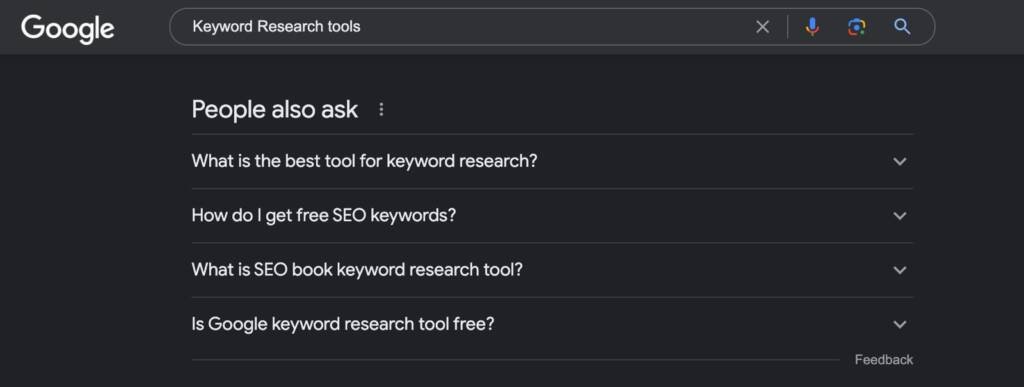
#5 Long Tail Keywords
These are longer, more specific phrases that are often easier to rank for. Including 2-4, long-tail keywords can attract more qualified traffic with higher conversion potential.
#6 Semantic Words
Google’s algorithms consider the semantics or the meaning behind words as discussed above. This means using latent semantic keywords can help Google understand and rank your content better.
You can find these semantic keywords easily by just typing your focus keyword in Google and moving on to the images section. Here you’ll find some words on top.

Chapter 4
Concept of Keyword Density in SEO
In this chapter, we’ll talk about one of the first questions that pop up: “How many keywords should I use for SEO?” in terms of keyword density. Today, we’re going to clear the concept of keyword density and expose some common myths surrounding it, all in a way that’s easy to digest for beginners.
Understanding Keyword Density
Keyword density is a measure of how frequently a keyword appears on a webpage compared to the total number of words on that page. It’s usually expressed as a percentage.
The formula to calculate keyword density is pretty straightforward:

For example, if your keyword appears 5 times in a 100-word piece of content, your keyword density would be 5%.
The idea behind maintaining a certain keyword density is to make it clear to search engines what your content is about without overdoing it.
However, this concept has evolved significantly over the years, leading us to some myths that need debunking.
Myths About Ideal Keyword Density
Myth 1: There is a ‘perfect’ keyword density. It’s a common belief that there’s a specific, one-size-fits-all percentage that guarantees higher rankings.
The truth? No such magic number exists. Search engines like Google have become more capable, focusing more on the context and quality of content rather than keyword stuffing.
Myth 2: Higher keyword density boosts rankings.
Simply stuffing your content with keywords does more harm than good. Not only does it make your content difficult and annoying to read, but it can also lead to search engine penalties for keyword stuffing.
What matters more is the relevance and context of your keywords within high-quality, valuable content.
What Should You Do Instead?
Create quality content and optimize it by integrating keywords naturally into it without thinking about a specific number number. Still, you can consider keyword density up to 1% to 2%. Keyword density less than 1% is also acceptable but it should not be more than 2%.
Chapter 5
Keyword Placement Best Practices
You have reached Chapter 5 and this means you have learned how many keywords should I use for SEO. It’s time to learn where to place them on your page for the best results.
This guide will walk you through the basics of keyword placement, ensuring your content not only resonates with your audience but also ranks well on search engines.
Key Locations for Keyword Insertion
Title Tag: The title tag is what appears in search engine results, and it’s the first thing people see. Place your focus keyword at the start of the title tag. One meta keyword is enough to use in SEO.
Headers: Incorporating keywords into your headers, especially H1 and H2 tags, helps search engines understand the structure and main topics of your content. It’s a great way to emphasize the importance of your keywords.
First 100 Words: Dropping your primary keyword in the first 100 words of your article signals to search engines what your content is about right from the start. It’s a strong indicator of relevance. You can use 10 to 20 keywords in the first 1000 words (1% to 2% keyword density) of the content. There are around 1400 to 1600 words are good for SEO. Some people think that 500 words are enough for SEO but it is not recommended especially for a blog post.
Meta Description: Although not a direct ranking factor, including keywords in your meta description can boost click-through rates. This summary is your chance to advertise your content to searchers.
URL: If possible, include your primary keyword in your page’s URL. This adds another layer of relevancy and can aid in better rankings.
Chapter 6
Tools and Techniques For Effective Keyword Research
Finally, we have reached the second last chapter. If you want to learn about the tools and techniques then this subtopic will be very beneficial.
Google itself is a good source for finding keywords especially semantic and related keywords. But to find the keywords volume, intent, and CPC, it needs to go to a keywords research tool.
Some of the useful tools are mentioned below with their benefits to use.
Google Keyword Planner:
A classic tool that’s both powerful and free. It offers insights into search volumes, competition levels, and related keywords. A great starting point for beginners.
SEMrush:
SEMrush offers comprehensive keyword data, including trends, keyword difficulty, keyword CPC, and SERP analysis. It’s ideal for assessing both your keywords and your competitors.
Ahrefs:
Similar to SEMrush, Ahrefs excels in keyword research, backlink analysis, and competitive insights. Its ‘Keywords Explorer feature provides valuable data on keyword difficulty, search volume, and more.
AnswerThePublic:
Perfect for uncovering long-tail keywords and questions related to your main keywords. This tool helps create content that answers your audience’s specific queries.
Techniques to Follow For Keyword Research
Finding keywords is one thing; choosing the right ones for your content is another. Here’s how to assess keyword relevance and competitiveness:
Relevance:
The more relevant a keyword, the more likely you’ll attract an audience genuinely interested in your content. Use the tools mentioned to explore variations and find the perfect match for your topics.
Search Volume:
High search volume indicates a lot of interest, but it can also mean high competition. Don’t ignore lower-volume keywords if they’re highly relevant to your niche; these can often lead to more targeted traffic.
Keyword Difficulty/Competition:
Tools like Ahrefs and SEMrush provide a ‘keyword difficulty score, estimating how hard it will be to rank for a particular keyword. Balance high-reward keywords with those you have a realistic chance of ranking for, based on your website’s current authority and SEO strength.
Keyword CPC:
Keyword CPC is also an important metric to include in the keyword research process. A keyword with a high CPC shows its potential. It simply means the advertisers are spending more money on these keywords because they are getting high leads/sales from them. Semrush is the perfect tool to find the CPC of a keyword.
Chapter 7
Case Studies
Congratulations on completing the guide, let’s see a page where we have practically implemented what we discussed in chapter 3: 6 Proven Hack – How Many Keywords Should I use For SEO, above and got results. So, if you want to know whether techniques work or not then this chapter is for you.
We were working on an organic food store Khaalis Zaike is a new website with zero authority and published an article on the topic “13 Panjeeri Benefits, Nutrition, A Comprehensive Guide” targeting the main keyword “Panjeeri Benefits”.
Here are the details of the types and number of keywords we used in this article for SEO.
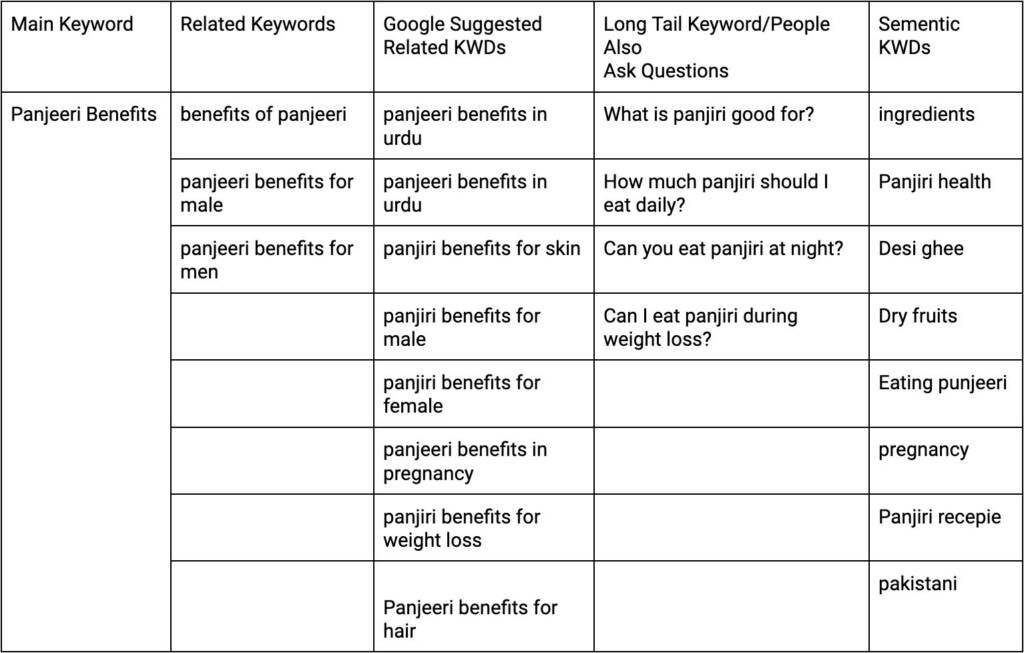
Through these amendments, we suddenly found an increase in traffic and our main focus keyword got ranked first on Google with lots of other related keywords
Focus Keyword “Panjeeri benefits” Ranking First On Google
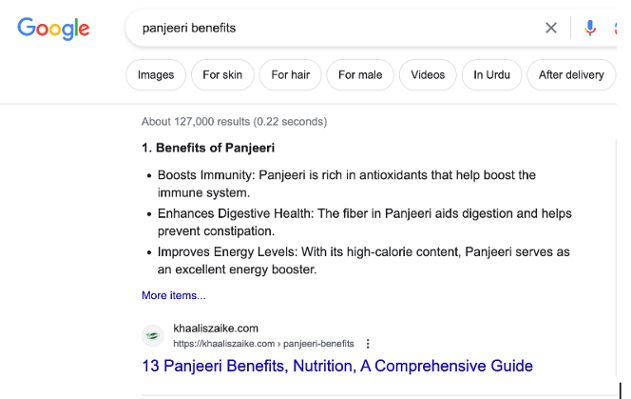
GA4 Stats For the Page “13 Panjeeri Benefits, Nutrition, A Comprehensive Guide”

GSC Stats For This Ranking Keyword
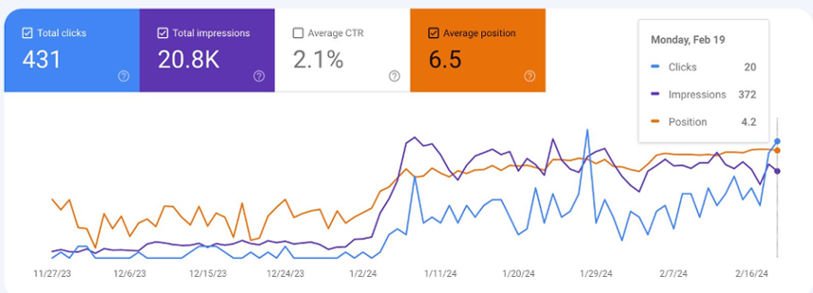
Conclusion
Thanks for reading our guide. We hope you enjoyed our proven hacks about how many keywords should I use for SEO. Let us know your views about this guide in the comments below.











